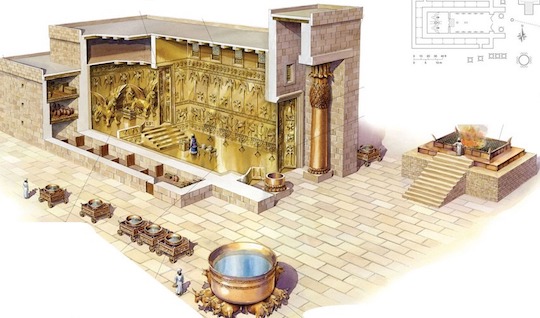In the First Book of Kings, we are told of the construction of the Temple of Jerusalem by King Solomon, which was constructed around 1000 BC, being made according to divine guidelines. Cypress wood was used for the floor, olive wood for the doors and cedar wood for the walls. In the same way, two Cherubim (15 cubits high, and wings extended with a length of 10 cubits), which were made of olive wood and covered in gold, were placed in the oracle to protect the Ark of the Covenant.
Once again the olive tree is shown as a sacred symbol of protection.
The first protective temple of the Ark of the Covenant was destroyed in the year 586 BC. It was rebuilt in 19 a.C. and destroyed again in the year 70 AD. Of the temple of Solomon only «the wall of the lamentations» remains, one of the 4 walls that surrounded the central building where the Ark was kept.
The Ark of the Covenant is the most sacred and significant artifact for Judaism, the most important object of the biblical panorama. Its history began more than 3,000 years ago.
According to Jewish and Christian tradition, this object was a sacred chest that was made of acacia wood (humanity of Christ), covered inside and out with the purest gold that symbolized the deity of Christ. It had a molding or gold rim around it, in order to facilitate the placement of lateral rods for when it was necessary to move it from one place to another.
The lid of the Ark, called «the mercy seat» (its meaning in Hebrew is «to cover» as «make atonement»), was also made of the purest gold. Two cherubim of solid gold were placed on the mercy seat, one facing the other, with the wings extended so as to cover both sides of the mercy seat. All of this information can be found in Exodus chapter 25.

